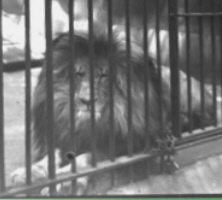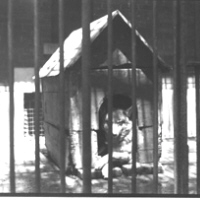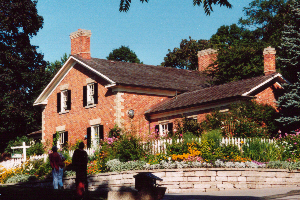Riverdale Zoo was established in Riverdale Park, where now we now find Riverdale Farm. In 1856, the City of Toronto bought 119 acres from the Scadding estate in order to establish a park and a jail farm. On August 11, 1880, Riverdale Park was officially opened. Ten years later the jail property was separated out from the park lands. Additional land was added later so Riverdale Park now consists of about 162 acres.
Alderman Lamb donated some deer in 1888 and encouraged prominent people to donate other animals or provide money to buy them. The collection grew quickly and in 1894, the Riverdale Zoo opened to become Toronto’s first zoo. By 1902, the zoo had sixteen pheasants, two ocelots, a male camel, a female dromedary, a buffalo bull, six pens of monkeys, a Siberian bear, a young female crane, some lions, and a hippopotamus. That year, the Toronto Railway Company had the two-storey, stone and pressed brick, Moorish style building known as the Donnybrook erected. The first weekend that the elephant and lions were shown, the Toronto Railway Company carried 20,000 people to the zoo.

There is nothing more desolate than a caged Lion

except for a Wolf that is caged and in a dog house.
The Riverdale Zoo was a typical zoo of its period, with animals displayed as curiosities in dark cages and cramped enclosures. It had to be replaced. In 1949 a citizen’s committee was formed to examine the possibilities of a major modern zoo, but it wasn’t until the 1960s that things began to move. In 1966, eleven citizens met at City Hall to form the Metropolitan Toronto Zoological Society and in 1967, Metro Council approved Glen Rouge as site for the new zoo. Construction began in 1970 and on August 5, 1974, the Metropolitan Toronto Zoo was opened to the public. The new zoo introduced some Innovative features which not only enhanced the public’s viewing experience, but also created more comfortable living areas for the animals. Animals were displayed in naturalized environments and grouped according to their geographic region.
At sunset on 30 June 1974, the Riverdale Zoo closed its gates for the last time and the animals were shipped to the new Zoo. From 1974 to 1978, many of the Riverdale Zoo buildings were torn down and the site levelled. The Residence, the Donnybrook, and the Island House buildings are the only buildings from the hold zoo left here.
The old zoo was converted into an urban farm called Riverdale Farm which officially opened on September 9, 1978. It has been the site of animal-related activities, concentrating on the farm animals and fowl that were in Ontario about 1900 and on recreational programming. Riverdale Farm has seen a number of changes since 1978. An 1850s Pennsylvania-style bank barn was reconstructed on the site and some new buildings were constructed: the Meeting House, a small animal barn, a shed, and the Simpson House, which is a replica 1850s- style brick farmhouse.

The Simpson House, a replica of 1850s-style brick farmhouse designed by Napier Simpson, a young architect who came to an untimely end.
For more information about this site see “A Glimpse of Toronto’s History.” MPLS #149, Toronto Zoo website and the Riverdale Farm page
